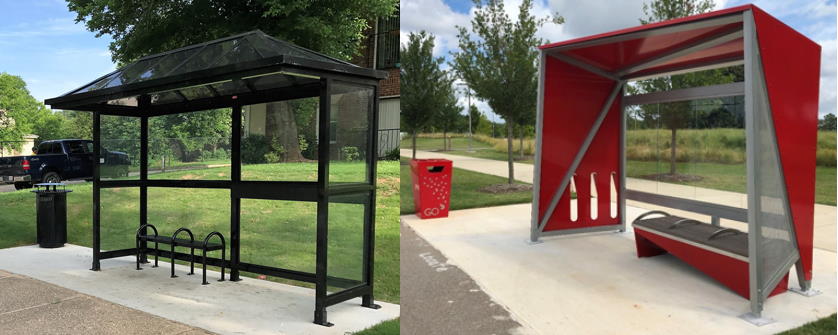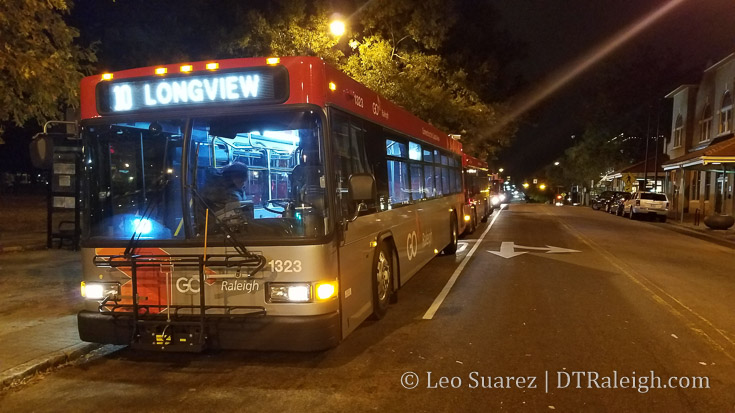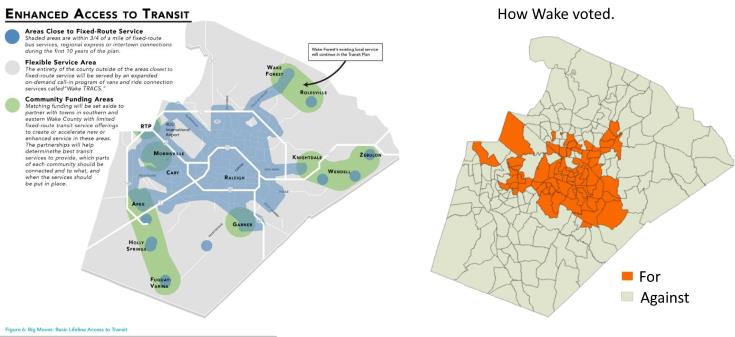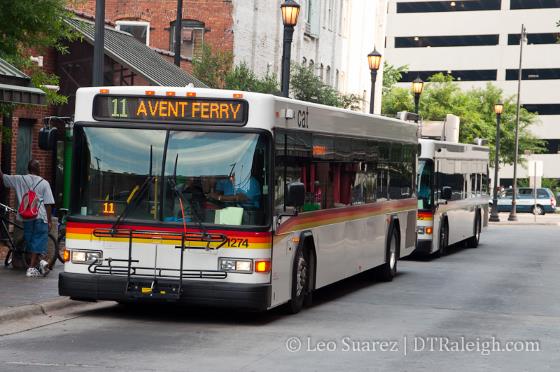I wanted to share the feedback I submitted about the Wake County Transit Plan, which all readers should take a look at. I think a whole discussion could come about the idea of an invisible east/west barrier that goes right down Raleigh. I am hoping that an upgrade to transit could break down that barrier and really expand mobility choices and access to all areas of the city. Does anyone else see these barriers to mobility around our city? -Leo
Feedback
Hello,
I’ve taken a good look through the latest Wake County Transit Plan update and wanted to share some thoughts I had about it. I’ll admit that this may be more detailed than the document shows but maybe it is something that the planning team could consider.
I believe there is this invisible “divide” between east and west Raleigh, where Capital Boulevard, McDowell/Dawson in downtown, and South Saunders create a sort of barrier. Going from parts east to west, and vice versa, by any travel method meets a “resistance” when you hit this divide.
Driving a car across Raleigh, the options are slim due to Capital Boulevard’s lack of cross streets, downtown’s more urban nature, and south Raleigh’s lack of east/west streets. Cycling is in a similar situation. Currently, none of the GoRaleigh bus routes go between east and west Raleigh but rather terminate in downtown’s Moore Square Transit Station for a transfer.
I see this Transit Station as contributing to that same invisible barrier.
My feedback as part of this new transit plan would be for the planning team to discuss this and see if transit could break through this barrier and connect east and west Raleigh more directly. For example, a bus route that does not stop in downtown Raleigh but uses both Hillsborough Street and New Bern Avenue/Edenton Street.
Thanks a lot ahead of time and I very much look forward for the successful implementation of this plan!
Response
Mr. Suarez
Thanks for taking the time to review the Recommended Wake County Transit Plan and for submitting your comment.
Your comment fits very well within the key goal of the Transit Plan to make transit “useful” to as many people as possible. Divides and barriers, real or perceived impact how and if people use transit and the focus of the transit plan is to address and solve these types of issues.
The project team has specifically looked at BRT and bus line corridors that flow through rather than to downtown. The New Bern Avenue to Morgan St /Hillsborough Street alignment has been specifically studied. That said, there are different perspectives on how BRT should flow through Downtown Raleigh and connect with the various destinations. The perspectives differ in how radically they would change existing streets, how vehicles would interact with bus stations and how the different BRT corridors would interact with each other. Moving forward we hope to have a clear community dialogue on the options, benefits and costs of the various ways to implement the different projects shown in the recommended transit plan. We anticipate this dialogue will be open to public ideas and reactions on solutions.
Some of the service realities we are asking decison-makers to consider are: (these parallel your comment)
1) As vehicle frequency increases there is less need to stop and wait at big stations and street based platforms (that allow vehicles to keep moving) make more sense.
2) Routes work best by collecting and combining multiple trips – routes that stop in downtown rather then flowing through downtown limit their usefulness for certain trips.
3) Frequent routes tend to be used for shorter trips and riders on shorter trips tend to have a low tolerance for delay (i.e. they will switch to other modes).
Please keep in mind that the transit plan is positioned to provide vision but also to allow a start and evolution approach if that is needed or best for the community. One question we asked staff from all of our partner agencies to answer on each of the projects was “are there multiple ways to accomplish that and still meet the goal?” The recommended transit plan takes this approach not to get “watered down” versions of everything but to keep an eye toward the larger goal and allow the system to change as needed as community perspectives change. National and local positions on transit, what street should be used for, and what creates a great place to live are changing and evolving in ways we have not seen in previous decades and these positions may/will likely continue to evolve.
If you have further questions on the Recommended Wake County Transit Plan please respond to this email, call 919-856-5477 or visit www.waketransit.com






